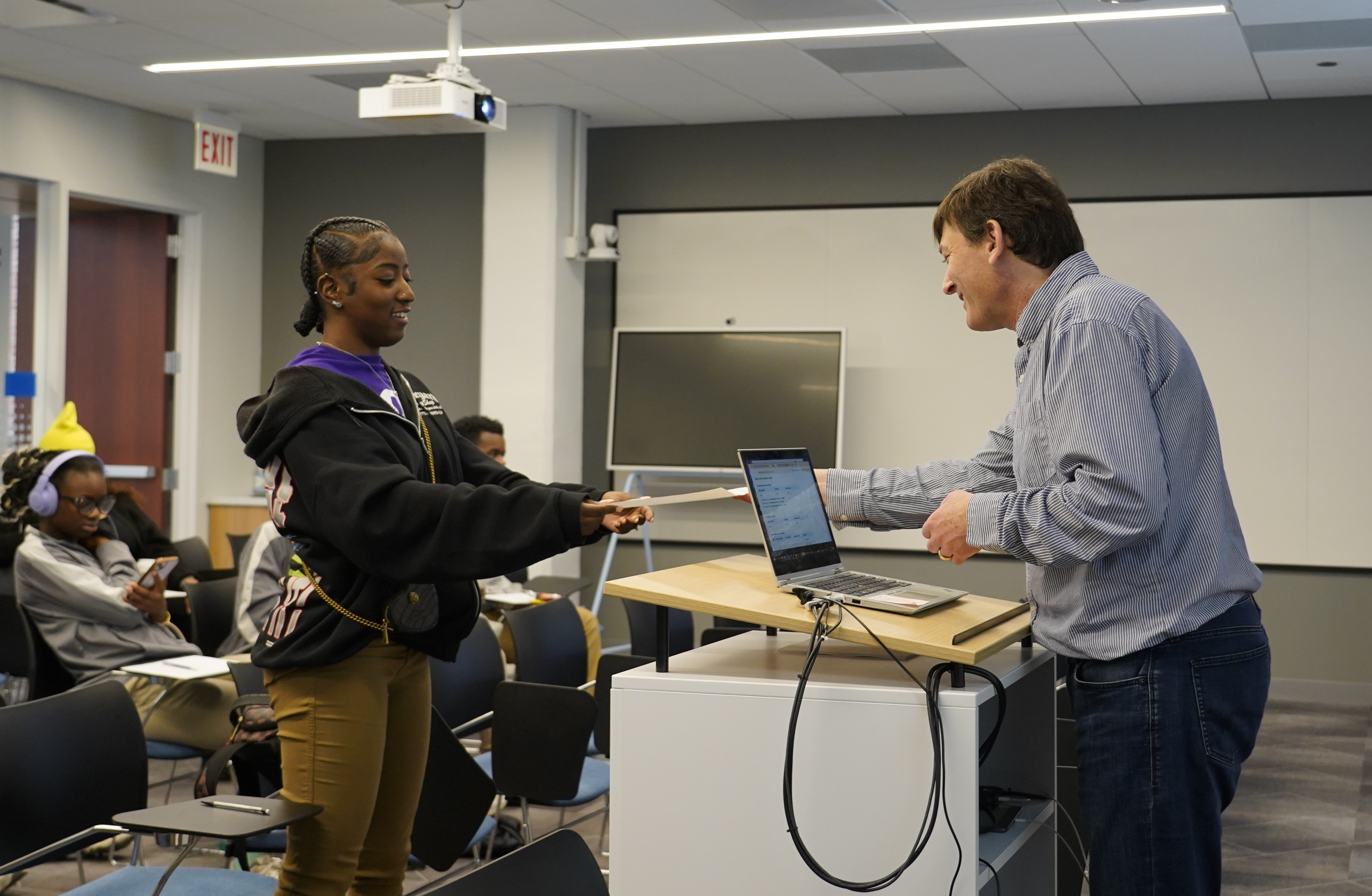Economic and Sustainable Development Impact Analysis of the University of Wyoming Athletics Program
Executive Summary
A comprehensive valuation study conducted by Collegiate Consulting for fiscal years 2022 through 2024 reveals that the University of Wyoming’s (UW) intercollegiate athletics program generates an average annual economic impact of $206.4 million. The total impact over the three-year analysis period exceeded $619 million. This report details the program’s substantial contributions to the University, the City of Laramie, and the State of Wyoming, demonstrating its role as a key driver for regional economic vitality and its alignment with several United Nations Sustainable Development Goals (SDGs).
Alignment with Sustainable Development Goals (SDGs)
- SDG 8: Decent Work and Economic Growth: The athletics program’s $206.4 million annual economic infusion directly promotes sustained, inclusive, and sustainable economic growth. This impact supports full and productive employment and decent work for the community by generating revenue for local businesses through direct and indirect spending from staff, student-athletes, and event attendees.
- SDG 11: Sustainable Cities and Communities: By generating $145.4 million from events and facility usage over three years, Wyoming Athletics makes the City of Laramie more inclusive, safe, resilient, and sustainable. The program enhances the local economic base and contributes to the cultural and social vibrancy essential for a thriving community.
- SDG 4: Quality Education: As an integral part of the state’s flagship educational institution, the athletics program contributes to the university’s mission. Revenue generated from athletics, including $72.7 million from external sources, supports the broader institutional ecosystem, while the program provides unique educational and personal development opportunities for student-athletes.
- SDG 17: Partnerships for the Goals: The commissioning of this study, funded through private donations to the Cowboy Joe Club and executed by Collegiate Consulting, exemplifies a multi-stakeholder partnership. This collaboration between public, private, and civil society sectors strengthens the means of implementation for achieving sustainable development objectives.
Key Economic Impact Drivers (FY 2022-2024)
- Media and Brand Exposure: The program generated an advertising value equivalent of $288.8 million across television, streaming, and social media platforms, enhancing the university’s brand and promoting the state on a national level.
- Events and Facility Utilization: Athletic events, summer camps, and the use of athletic facilities for non-athletic purposes contributed $145.4 million to the local economy.
- Direct and Indirect Regional Spending: The economic activity of student-athletes and athletics department staff generated a direct and indirect impact of $112.3 million for Laramie and the surrounding region.
- External Revenue Generation: A total of $72.7 million was contributed through athletic revenues, including sponsorships, media rights, and other external funding sources.
Sector-Specific Contributions
- The total game-day economic impact across all sports was calculated at $104.9 million for the three-year period.
- Football was identified as the single largest driver of economic activity, accounting for $71.4 million of the total game-day impact.
- Men’s and Women’s Basketball were also noted as significant contributors to the program’s overall economic value.
Conclusion
The University of Wyoming’s athletics program functions as a significant economic engine and a catalyst for sustainable development. The findings quantify its value beyond the field of play, illustrating how the program strengthens the university, enriches the student experience, and fuels local and statewide economic growth. Its contributions are deeply intertwined with Wyoming’s identity and its pursuit of a prosperous and sustainable future, aligning directly with global goals for economic strength and community resilience.
Analysis of Sustainable Development Goals in the Article
1. Which SDGs are addressed or connected to the issues highlighted in the article?
-
SDG 8: Decent Work and Economic Growth
- The article’s central theme is the significant economic impact of the University of Wyoming’s athletics program. It quantifies how the program acts as a major economic contributor to the local and state economies, directly aligning with the goal of promoting sustained, inclusive, and sustainable economic growth. The report highlights job creation and economic activity through spending by the athletics department, staff, student-athletes, and visitors.
-
SDG 9: Industry, Innovation and Infrastructure
- The article mentions the economic impact generated by the use of university facilities for both athletic and non-athletic events. This relates to building resilient infrastructure and promoting inclusive and sustainable industrialization, as the university’s athletic facilities serve as a crucial piece of local infrastructure that drives economic activity and community engagement.
-
SDG 17: Partnerships for the Goals
- The study itself is a product of a partnership between a public university (University of Wyoming), a private entity (Collegiate Consulting), and a civil society fundraising group (Cowboy Joe Club). Furthermore, the article mentions significant revenue from “sponsorships, media rights, and other external sources,” which are forms of public-private partnerships essential for achieving sustainable development.
2. What specific targets under those SDGs can be identified based on the article’s content?
-
Under SDG 8: Decent Work and Economic Growth
- Target 8.2: “Achieve higher levels of economic productivity through diversification… including through a focus on high-value added and labour-intensive sectors.” The article positions the intercollegiate athletics program as a high-value sector that diversifies the local economy beyond traditional industries, contributing “$206.4 million” annually.
- Target 8.3: “Promote development-oriented policies that support productive activities, decent job creation, entrepreneurship, creativity and innovation…” The economic impact described, including “$145.4 million” from game-day and event spending, directly supports productive activities and local entrepreneurship (e.g., hospitality, retail).
-
Under SDG 9: Industry, Innovation and Infrastructure
- Target 9.1: “Develop quality, reliable, sustainable and resilient infrastructure… to support economic development and human well-being…” The article implies this target by highlighting the economic value derived from “non-athletic uses of facilities,” demonstrating that this infrastructure supports broader community and economic development.
-
Under SDG 17: Partnerships for the Goals
- Target 17.17: “Encourage and promote effective public, public-private and civil society partnerships…” The study is a direct example of this target, having been conducted by Wyoming Athletics (public), Collegiate Consulting (private), and funded by the Cowboy Joe Club (civil society). The “$72.7 million” in revenue from sponsorships and media rights further exemplifies these partnerships.
3. Are there any indicators mentioned or implied in the article that can be used to measure progress towards the identified targets?
-
For SDG 8 Targets:
- Annual economic impact: The figure of “$206.4 million” serves as a direct indicator of the value added to the economy.
- Total economic impact over a period: The “$619 million” total impact over three years measures the sustained contribution.
- Economic impact of staff and athletes: The “$112.3 million” generated by student-athletes and staff is an indicator of the economic activity tied to employment and local spending.
- Revenue from tourism and events: The “$145.4 million” from athletic events, camps, and other facility uses measures the program’s impact on local tourism and service industries.
-
For SDG 9 Targets:
- Economic contribution of infrastructure: The portion of the “$145.4 million” generated from “non-athletic uses of facilities” is an indicator of the infrastructure’s contribution to economic development beyond its primary purpose.
-
For SDG 17 Targets:
- Existence of multi-stakeholder partnerships: The collaboration between the university, Collegiate Consulting, and the Cowboy Joe Club is a qualitative indicator of a successful partnership.
- Value of financial partnerships: The “$72.7 million” generated from “sponsorships, media rights, and other external sources” is a quantitative indicator of the financial scale of public-private partnerships.
4. Create a table with three columns titled ‘SDGs, Targets and Indicators” to present the findings from analyzing the article.
| SDGs | Targets | Indicators |
|---|---|---|
| SDG 8: Decent Work and Economic Growth | 8.2: Achieve higher levels of economic productivity through diversification and focus on high-value sectors. |
|
| SDG 8: Decent Work and Economic Growth | 8.3: Promote policies that support productive activities, job creation, and entrepreneurship. |
|
| SDG 9: Industry, Innovation and Infrastructure | 9.1: Develop quality and resilient infrastructure to support economic development. |
|
| SDG 17: Partnerships for the Goals | 17.17: Encourage and promote effective public, public-private and civil society partnerships. |
|
Source: gowyo.com







